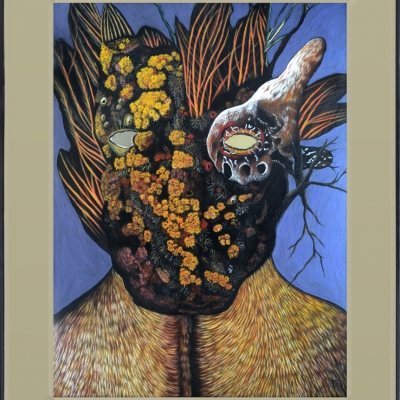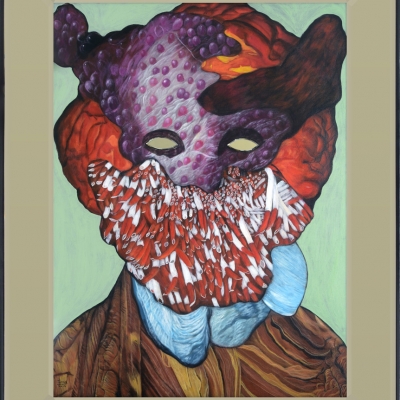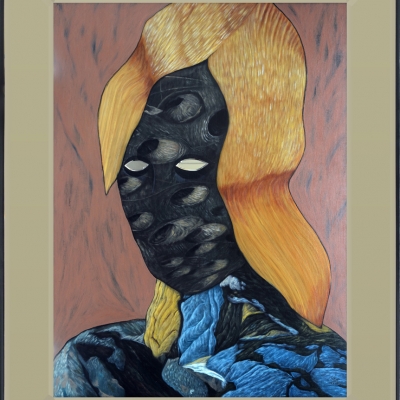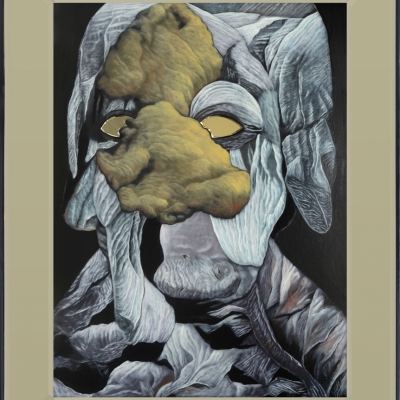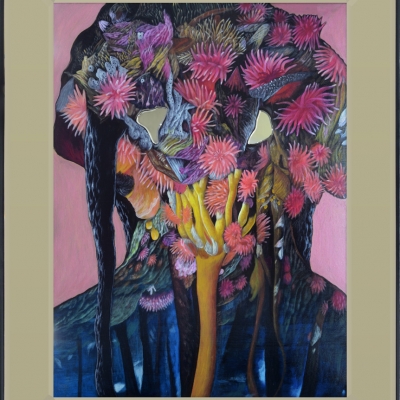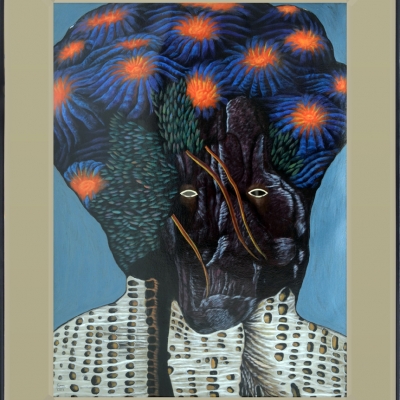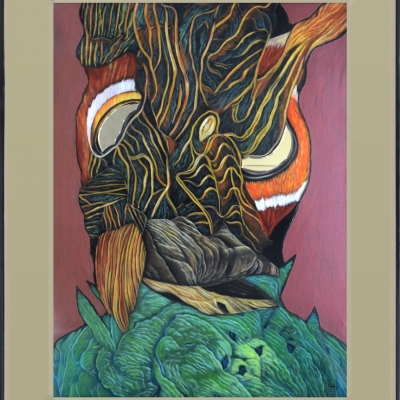The depictions of these native gods resurface in Rodel Tapaya’s work from oral traditions around ancient beliefs in the Philippine religion, a religion that believes that gods existed in many forms and that there is an invisible realm within our world. Contained in the format of a portrait, they are rendered as abstracted combinations of images that relate to forgotten notions on the nature of the spiritual realm. These seven characters, expressive of their archaic origins, form a pantheon of false representations that turn the idols as portals into the recesses of dreams. The painter is interested not in capturing the likeness but the spirit of his subjects. After all, they existed largely without bodies and their anamorphic faces can be read as reflecting the nature they dominated.
Meanwhile, we are caught by the eyes made of mirrors reflecting our gaze, signifying an ageless and impenetrable existence, one that is enveloped in the splendor of mysterious vistas. In arresting the energy of his images, Tapaya creates work that surpasses the subject’s materiality. The milieu becomes ambiguous and in many works there is no indication of facial features, impregnating a sense of infinity and fluctuation to an otherwise distinguishable silhouette.
These works are exhibited in mirror frames, as if altar saints – treasured relics of a more religious era. The manner of presentation renders them untouchable on both literal and figurative levels despite the approachability of their intimate size and physical presence. These idols become surrogates of the people they watch over. The painter breathes life into the mystique, challenging the recording of the imagination. The paintings, accordingly, are not to be read as honest depictions, but rather, as transcending reality, and as visual rumination on the past. The works emerge almost in worship; an impulse to inhabit known material and discover unexpected points of congregation. In merging abstruse and improbable elements, the lines are erased between our vernacular belief and fine art, spectator and spectacle, retention and imagination across time.




